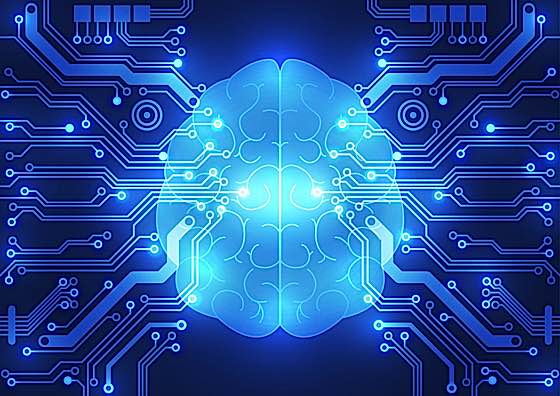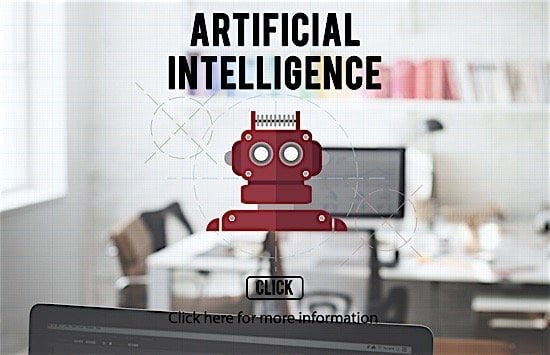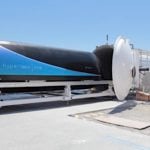The fusion of three worlds — biological, digital and physical — gave rise to the massive potential of the fourth industrial revolution. The third Industrial revolution was triggered by computers and automation. Industry 4.0 has been described as “Cyber-biological-physical systems.” The pace of “real time” change is one of the reasons experts claim the “fourth industrial revolution” is already significantly changing everything. Companies not thinking in terms of Industry 4.0 run the risk of being left behind. While the economic impact and scale is expected to be massive — with sudden revolutionary changes, rather than evolutionary — there are risks, as with any force of change.

Can government, business, even society keep up with the expected radical changes? Potentially, barriers will continue to tumble (including National ones), workforces will reorganize around creative centers, and our entire lifestyle — as already demonstrated with social media — will drastically change. With breakthroughs happening in different fields of science and technology at an exponential rate, the fourth revolution developed faster than experts expected.
Creative human equation
Creative humans, rather than fusion of technologies, is driving the 4th Industrial Revolution. Advancement in technology and their effective fusion is not the major driving force of this revolution — that’s a result. Creativity is the major driving force behind this “industrial revolution.” While it is true that AI, super computers and robot manufacturing have already started reshaping workforces and economies, it is the creative workforce at companies such as Google, Tesla, SpaceX, and other notables who are helping engineer our future.

The WEF in their 46th annual meeting in 2016 gave a definition or a driving force for the fourth industrial revolution. They defined it as “fusion of technologies that is blurring the lines between the physical, digital and biological spheres” [1]. This industrial revolution will take our economic growth to new heights. With technologies such as artificial intelligence and Nanorobots, the need for low-level skill workers will decrease dramatically. With highly advanced technologies, such as 3-D printing, nanotechnology, quantum computing, artificial intelligence, and their effective mix and match the products of fourth industrial revolution will completely change the way we perceive things in this world.
Creativity the number 3 recruitment skill and rising
According to a recent survey, “creativity” — which was previously rated as the number 10 skill critical for economic growth — is now number 3, with only “complex problem solving” and “critical thinking above it” [2]. With some companies, especially incubators and tech innovators, creativity is actually number one.

With advancement in artificial intelligence, mechatronics and computational technologies, more and more workforce is being replaced by robots. Instead, companies are focusing on the creative people needed to create these revolutionary tools. It doesn’t matter how sophisticated or intelligent a machine is, the purpose of any machine will still be to serve human beings. The parameters and limits in which any machine will work will always be defined by people [3].
This is where creativity and critical thinking comes in. We need to have a more creative workforce to keep ahead of the frantic pace of Industry 4.0. In a blog written by Alex Gary in World Economic Forum, he writes “Robots may help us get to where we want to be faster, but they cannot be as creative as humans (yet)” [2].

This is the main reason why creativity will become one of the vital skills in near future. We will need people who can think out of the box and get the things done in an effective and unique way. To get the maximum advantage out of the current and upcoming technologies a workforce creative enough to fully understand the potential and exploit it is needed. The people who can come up with creative ideas on any given topic, or who can develop a new and creative solution to different problems, will be highly sought after in the close future.
7 million low-level skills jobs lost in next 5 years?
In a discussion at the 46th meeting of WEF the chairman of the forum, Klaus Schwab predicted that within next 5 years when the fourth industrial revolution will be more mature 7.1 million jobs that require low-level skills will be lost and 2 million jobs will be created. As the low-skilled workers are replaced by machines, the demand for skills that cannot be yet completed by automation-computing, such as innovative thinking, creativity, sensitivity, will rise.

Human resource training programs have already changed, training skilled individuals to not only learn new technology but also using to develop and create a new ideas. A new model designed specially to cater for these needs has emerged and its named as 70-20-10 model. According to this model, the training of a skilled and creative individual will comprise of three different types of learning. 70 percent of the learning will be experiential, 20 percent will be social while only 10 percent of learning will base on formal training [4].
Experiential learning and social learning programs
Experiential learning, which is also called workplace learning, is a non-formal type of learning that you acquire through job experience. This kind of working is already maximizing the learning outcomes at leading companies; it is fast and effective.
Microsoft’s Garage project is an excellent example of experiential learning in which they allow employees to interact with one another and enhance their creative and learning development. Social learning is mainly focused on the interaction of people of different departments which can result in an increased overall knowledge of the company.

LG is one of the companies that has the most effective social learning training programs. Formal learning can include lectures and instructor-led learning programs but as the communication and technology developed this has also taken a new form. New learning techniques such as e-learning and smart learning are on the rise today. One such example is the Google EDU program in which their employees can take different online courses to enhance their skills.
In his blog published on Association for Talent Development Chan Lee writes “To prepare for the fourth industrial revolution, companies must cultivate creative human resources that can effectively utilize technology and produce new products” [4].
Working environment important to fostering creativity
There is one concept of creativity that is not based on the actual work interaction. The actual work environment is key. Working conditions have a major effect on the performance of the workers and keeping this fact in mind many large scale multinational companies are spending a lot of time and money on creating a workspace environment that is relaxing and fun as compared to the old school formal official environment. A more relaxed and stress-free working environment is proven to increase the creativity and critical thinking of workers. In his blog on WEF Itia Palti writes “Evidence that psychological and physical well-being is paramount to creative thinking will turn the historic exchange of human health for economic growth on its head” [5].
Bibliography
| [1] | K. Schwab, “Fourth Industrial Revolution,” in World Economic Forum, Geneva, 2016. |
| [2] | A. Gary, “World Economic Forum,” 19 January 2016. [Online]. Available: https://www.weforum.org/agenda/2016/01/the-10-skills-you-need-to-thrive-in-the-fourth-industrial-revolution/. [Accessed 25 April 2017]. |
| [3] | E. Mott, “Creatorbase,” 29 April 2016. [Online]. Available: http://www.creatorbase.com/blog/2016/04/creativity-becomes-a-top-job-skill-in-the-4th-industrial-revolution.html. [Accessed 25 April 2017]. |
| [4] | C. Lee, “Developing Creative Human Resources for the Preparation of the Fourth Industrial Revolution,” Association for Talent Development, 9 March 2017. [Online]. Available: https://www.td.org/Publications/Blogs/Global-HRD-Blog/2017/03/Developing-Creative-Human-Resources-for-the-Preparation-of-the-Fourth-Industrial-Revolution. [Accessed 25 April 2017]. |
| [5] | I. Palti, “Why creativity will drive the next industrial revolution,” World Economic Forum, 19 April 2017. [Online]. Available: https://www.weforum.org/agenda/2017/04/why-creativity-will-drive-the-next-industrial-revolution. [Accessed 25 April 2017]. |

































